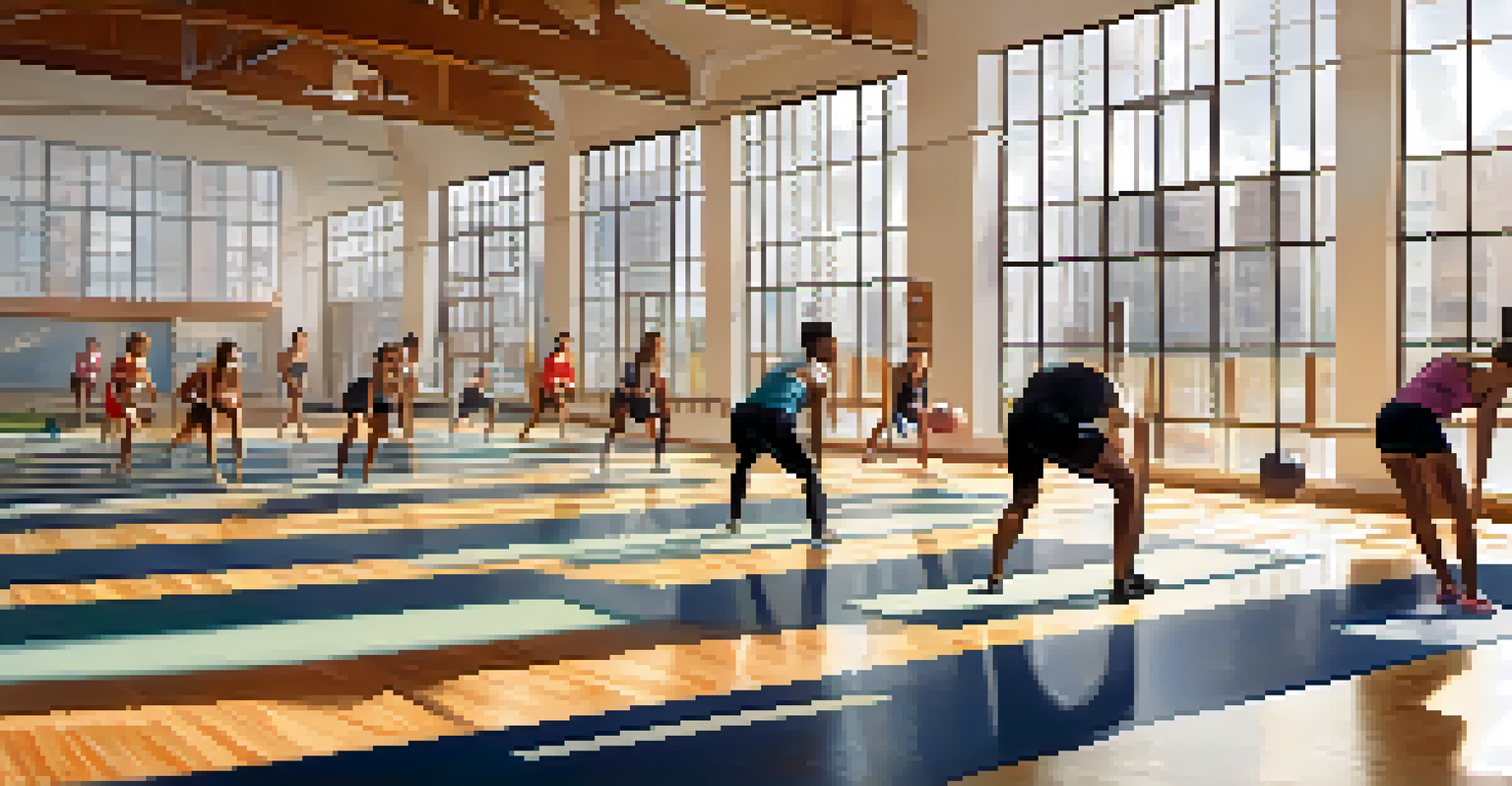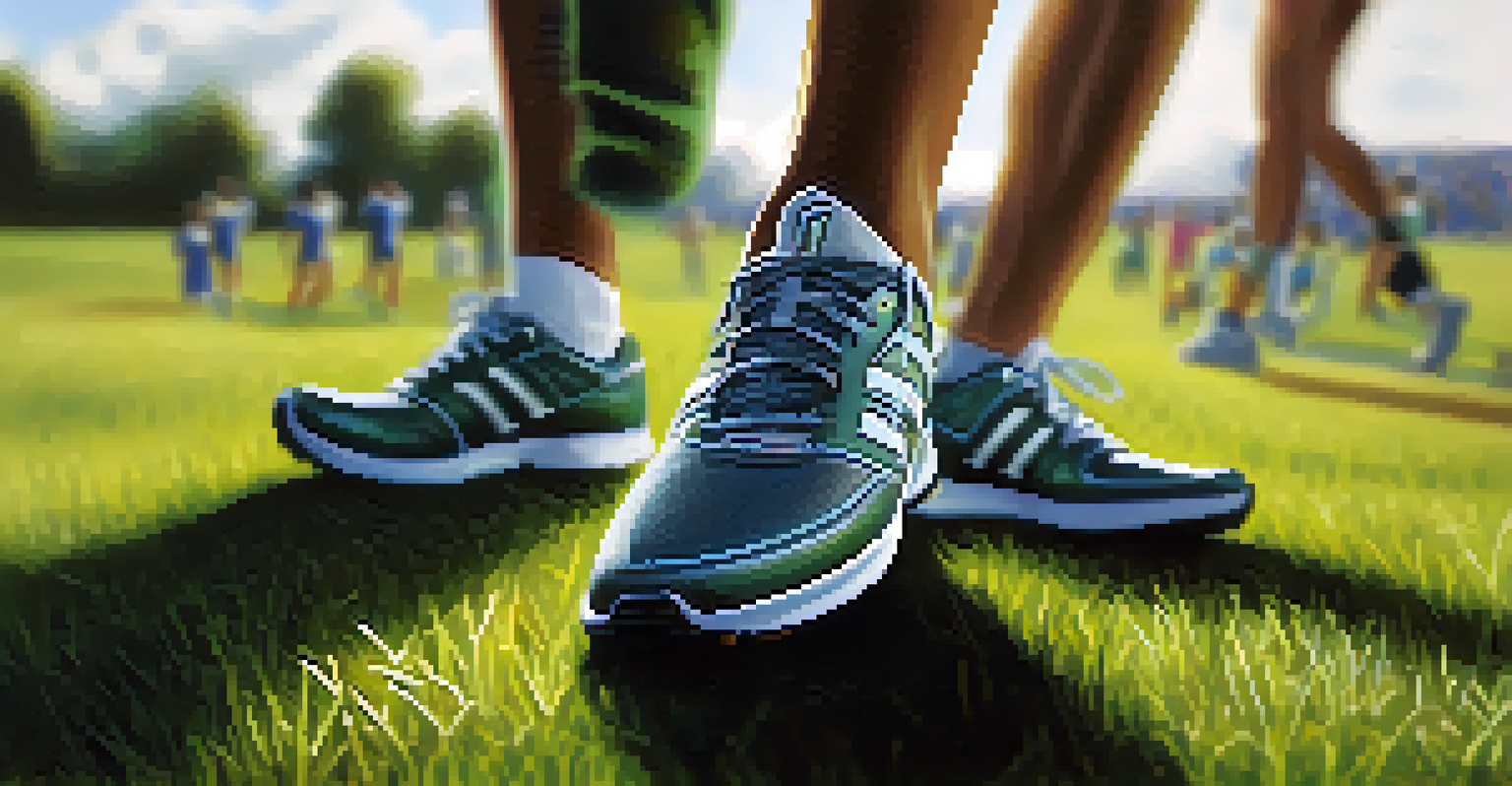The Science Behind Sports Injuries: Causes and Solutions

What Are Sports Injuries and Why Do They Occur?
Sports injuries are physical damages that occur during athletic activities. They can range from minor sprains to serious fractures. Understanding why these injuries happen is crucial for athletes at all levels.
In sports, the only thing that matters is the ability to bounce back from injury.
The primary causes of sports injuries include overuse, improper technique, and lack of conditioning. For example, a runner might develop shin splints from running too much without adequate rest. Recognizing these factors can help in preventing injuries.
Additionally, environmental conditions like wet surfaces or inadequate equipment can contribute to injury risk. Athletes need to be aware of their surroundings and ensure they have the right gear to minimize these risks.
Common Types of Sports Injuries: An Overview
Sports injuries can be broadly classified into acute and chronic types. Acute injuries, like sprains or fractures, happen suddenly during play, while chronic injuries, such as tendonitis, develop over time due to repetitive stress.

For instance, a basketball player might suffer an ankle sprain during a game, while a swimmer could experience shoulder pain from years of repetitive strokes. Both types require different approaches to treatment and prevention.
Injury Causes and Prevention Tips
Understanding the common causes of sports injuries, such as overuse and improper technique, is crucial for effective prevention.
Understanding these categories helps athletes and coaches identify potential issues early. This knowledge is vital for creating effective training programs that prioritize safety.
The Role of Warm-Up and Cool-Down in Injury Prevention
A proper warm-up prepares the body for intense activity, increasing blood flow to muscles and enhancing flexibility. This process significantly reduces the risk of injuries during sports.
Take care of your body. It's the only place you have to live.
Similarly, cooling down after exercise is just as important. It aids in muscle recovery and helps prevent stiffness and soreness, which can lead to injuries if not managed properly.
Incorporating dynamic stretches and light aerobic activities in warm-ups, along with static stretching post-activity, can make a substantial difference. Simple routines can be highly effective for athletes of all levels.
Nutrition's Impact on Athletic Performance and Injury Risk
Nutrition plays a critical role in an athlete's performance and their susceptibility to injuries. A balanced diet fuels the body and supports muscle recovery, helping to maintain peak performance.
For example, inadequate hydration can lead to muscle cramps, increasing the risk of injuries. Athletes should pay attention to their fluid intake, especially during intense training or competition.
Importance of Nutrition and Rest
A balanced diet and adequate rest are essential for optimal athletic performance and reducing the risk of injuries.
Moreover, vitamins and minerals are essential for maintaining healthy bones and muscles. Incorporating nutrient-rich foods can enhance overall health and resilience against injuries.
The Importance of Rest and Recovery in Sports
Rest and recovery are often overlooked aspects of athletic training, yet they are crucial for preventing injuries. When athletes push themselves too hard without adequate rest, they increase their risk of overuse injuries.
Prioritizing rest days allows the body to repair and strengthen, which is essential for long-term success. For instance, many professional athletes incorporate rest days into their training schedules to avoid burnout.
Listening to one's body is key; if something feels off, it’s vital to take a step back. This proactive approach can help athletes avoid more severe injuries down the line.
Using Proper Equipment to Prevent Sports Injuries
The right equipment is a fundamental aspect of injury prevention in sports. Proper footwear, for instance, can provide the necessary support and grip needed for various activities.
In contact sports, wearing pads and protective gear can significantly reduce the risk of injuries. Athletes should be sure to wear equipment that meets safety standards and fits well.
Role of Proper Equipment in Safety
Using appropriate and well-maintained sports equipment significantly contributes to injury prevention during athletic activities.
Regularly checking and maintaining sports gear is also essential. Worn-out equipment can compromise safety, making it crucial for athletes to stay vigilant in this regard.
Rehabilitation: The Path to Recovery After Injury
Rehabilitation is a critical phase following a sports injury. It involves a systematic process aimed at restoring strength, flexibility, and functionality to the injured area.
Working with professionals like physical therapists can provide athletes with tailored recovery plans. These plans often include exercises that gradually build strength without risking re-injury.

Additionally, mental recovery is just as important. Athletes must be supported emotionally and psychologically during rehabilitation to ensure a full return to their sport.